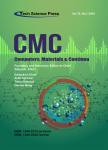Sustainable Energy Management with Traffic Prediction Strategy for Autonomous Vehicle Systems
作者机构:Department of Computer and Self DevelopmentPreparatory Year DeanshipPrince Sattam bin Abdulaziz UniversityAlKharjSaudi Arabia Department of Computer EngineeringCollege of Computers and Information TechnologyTaif UniversityTaif21944Saudi Arabia Department of Industrial EngineeringCollege of Engineering at AlqunfudahUmm Al-Qura UniversitySaudi Arabia Department of Computer ScienceCollege of Science&Art at MahayilKing Khalid UniversitySaudi Arabia
出 版 物:《Computers, Materials & Continua》 (计算机、材料和连续体(英文))
年 卷 期:2022年第72卷第8期
页 面:3465-3479页
核心收录:
学科分类:0809[工学-电子科学与技术(可授工学、理学学位)] 08[工学]
基 金:This work was supported by Taif University Researchers Supporting Program(project number:TURSP-2020/195) Taif University Saudi Arabia
主 题:Sustainable energy transportation energy management traffic flow prediction soft computing deep learning
摘 要:Recent advancements of the intelligent transportation system(ITS)provide an effective way of improving the overall efficiency of the energy management strategy(EMSs)for autonomous vehicles(AVs).The use of AVs possesses many advantages such as congestion control,accident prevention,and ***,energy management and traffic flow prediction(TFP)still remains a challenging problem in *** complexity and uncertainties of driving situations adequately affect the outcome of the designed *** this view,this paper presents novel sustainable energy management with traffic flow prediction strategy(SEM-TPS)for *** SEM-TPS technique applies type II fuzzy logic system(T2FLS)energy management scheme to accomplish the desired engine torque based on distinct *** addition,the membership functions of the T2FLS scheme are chosen optimally using the barnacles mating optimizer(BMO).For accurate TFP,the bidirectional gated recurrent neural network(Bi-GRNN)model is used in AVs.A comprehensive experimental validation process is performed and the results are inspected with respect to several evaluation *** experimental outcomes highlighted the supreme performance of the SEM-TPS technique over the recent state of art approaches.



